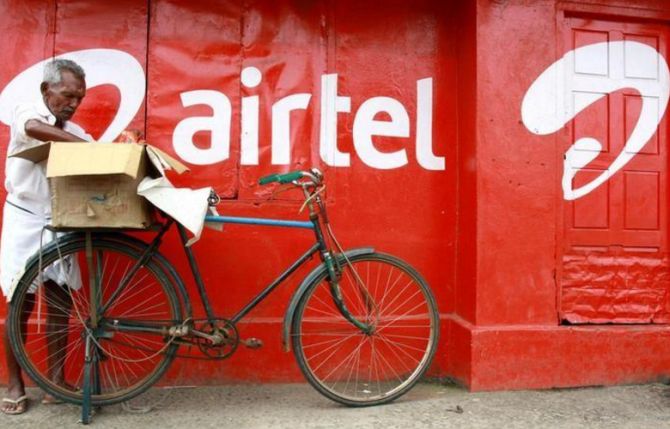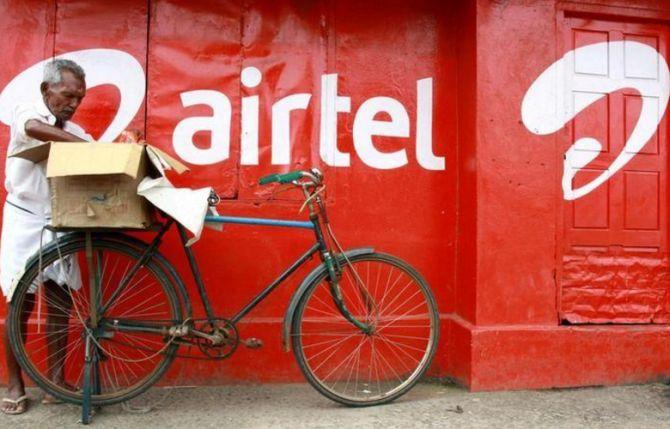How Airtel took a long call on profit by focusing on costs and customers
Six consecutive profitable quarters after an equal number of losses — for Bharti Airtel, the turnaround has been quick.
But it is not a result of higher tariffs or absence of exceptional items alone.
Execution and strategy are playing a part, too.
Bharti Airtel’s chief executive officer Gopal Vittal summed it up in a post-result conference call last month.
“We track the profit in each of our 237,500 (cell) sites.
“We know exactly what the problem is: Do we need more customers on that site or do we need to lower the cost structure on that site?
“This allows us to be targeted in terms of intervention — go-to market, network improvements or a leaner site with lower cost structure,” Vittal said.
Airtel reported nearly a three-fold year-on-year increase in its net profit to Rs 2,008 crore in the fourth quarter of FY22.
Its average revenue per user per month (ARPU), which is the highest in the industry (see table 1), grew 9.2 per cent sequentially and 22 per cent on a year-on-year basis to Rs 178.
The company has been growing its customer base, too, in the face of stiff competition from Reliance Jio (see table 2).
The 4G customer base crossed the 200-million mark at the close of fourth quarter as it added 5.2 million new customers.
Its 4G customer base now accounts for 62 per cent of its total subscriber base in India.
Airtel crossed the 100-million mark in the 4G segment in the second quarter of FY20 and has, thus, doubled the figure in two and a half years.
In contrast, rival Vodafone Idea’s 4G customer base moved up from 90 million in Q2 FY20 to 118 million at the end of the fourth quarter FY22.
During the fourth quarter FY22, Airtel also added 200,000 post-paid subscribers.
Though the segment accounts for less than 5 per cent of total customer base for Airtel, it is ARPU-accretive, meaning it will contribute incrementally to growth, due to higher base charges and lower churn.
So, what did Airtel do to sustain growth while Vodafone Idea faltered in execution?
Its investments in capacity and network through acquisition of sub-GHz spectrum in 2021 and the rollout of towers have given it a wider coverage.
“Our expansion of mobile coverage footprint allows us to provide broadband connectivity across 795,000 villages and towns.
“Even more quietly we have spent the last five years bringing our data into a massive platform that stores over 100 petabytes of data (one petabyte equals a million gigabyte).
“This entire platform talks to a very thin customer 360 platform, which can respond in milliseconds to any request or offer to be served to a customer,” Vittal informed analysts.
Investments in digital infrastructure coupled with the use of artificial intelligence and machine learning tools have helped India’s second-largest telecom company to gain 4G customers as well as fix network experience in case of glitches.
Simultaneously, organisational restructuring has helped it to serve customers better and lower costs.
“In the last four years, we have stripped out $1.2 billion of waste in our business, making it leaner and swifter.
“We do this through applying rigour, leveraging tools and technology, and sensible win-win negotiations with our partners,” Vittal said.
“Airtel has managed to keep its cost structure lean, offer better experience through 4G investments and raise funds,” a telecom sector analyst pointed out.
Airtel has raised over $18 billion to strengthen its balance sheet in the last few years.
“Our operating cash flow is more than adequate to cover all our capex needs and with improved tariffs the operating leverage of our business model will release even more cash,” the Airtel CEO said.
Investors and analysts remain upbeat about the Sunil Mittal-led telecom company.
Last month, Moody’s upgraded Bharti Airtel and changed the outlook from positive to stable in view of strengthening of the company’s operational metrics, lower leverage and improved profitability.
“We expect that these improvements can be sustained given Bharti’s solid market position, rising profitability at its core Indian mobile business and prudent financial management,” Moody’s senior vice-president Annalisa Di Chiara said.
Earlier this week, Morgan Stanley in its report said that Airtel is well positioned to absorb the incremental investments related to 5G without compromising its balance sheet strength.
“Over the next two years, we expect Airtel to generate cumulative free cash flow to equity (post-lease, spectrum and interest payments) of $6.7 billion.
“This along with potential inflows from a partly paid rights issue should help keep net debt in check.
“We expect return on capital employed to improve to 16 per cent by FY24 from 9 per cent in FY22,” it said.
The key risks going forward, it added, was higher than expected capex in FY23, delays to price hikes and requirements for further investments in group companies like Indus Towers.
Source: Read Full Article


